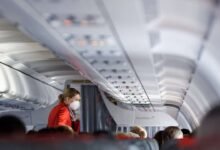Morocco Travel – Morocco Itinerary – Morocco Desert Tour

Casablanca:
Casablanca is the most important commercial and industrial center in Morocco, the largest port in North Africa and, with over 3 million inhabitants, the largest city in Morocco. The city name comes from Spanish and means “White House”, the Arabic name is “Dar al Baida” (Dar House = casa, Baida-white branca baw, blanca) – a white house is said to have served as a landmark for theShips. A lively street art scene has developed in the city in recent years. Many formerly rather dreary facades are now adorned with huge, colorful murals. The cityscape of Casablanca thus received an artistic touch in many corners (e.g. in the medina and in the El Hank district).
The densely populated metropolitan area of Casablanca is the social hotspot of the country due to the uncontrolled influx of poor rural populations and the slums (bidonvilles) on the outskirts of the city (including the Cité Mohammadia and Sidi Moumen districts). The sleek, sparkling clean neighborhoods of Maarif, California (!). Anfa, Ain Diab and the holiday resorts on the coast with chic new buildings and beach facilities are in stark contrast to the littered poorer parts of the city and the shacks made of tin and plastic sheeting in the Bidonvilles. Nowhere else in Morocco do the contrasts between rich and poor collide as they do here. In the outskirts along the Autobahn, people try to hide poverty by building walls to shield the slums from the eyes of strangers.
Some bidonvilles have also been demolished and new buildings built for the socially disadvantaged, but many projects have remained and remain stuck in residences. If you want to help effectively, you should donate (instead of giving money to begging children) to a charitable organization, the street children and former PetitesBonnes (child slaves or housemaids) help Apart from the very imposing Hassan II Mosque, Casablanca offers hardly any tourist attractions. The medina is very small and, in contrast to Fès, Marrakech or other cities, doesn’t look very oriental. Cinemas, cafés, restaurants, nightclubs, galleries and shopping centers like the huge Morocco Mall – everything that we know from major European cities can be found in the most modern city in Morocco. As a result, Casablanca has developed into the “dream city” of all western-oriented Moroccans. For Europeans, however, “Casa” is not worth a longer stay.
Story
The finds of a Paleolithic settlement in the “Sidi Ahmad er Rahman” quarry, 11 km from Casablanca, and the finds of fossil skull fragments in the “Thomas” quarry, from which the first Homo sapiens could be electronically reconstructed, point to an early settlementclose the area.
The Berber settlement of Anfa from the 8th century is historically verifiable, on the foundations of which today’s town was built. The place achieved dubious fame in the 14th century under the Berber tribe of Hilal as a republic of pirates.
The numerous attacks by the Portuguese on the Atlantic coast in the 15th/16thCentury strongly influenced the development of the city. In 1496 it was devastated by Don Ferdinand’s army. Another raid by Portuguese troops took place in 1515. In 1575 the city was occupied by the Portuguese and given the name Casabranca D. The occupation lasted until 1755 when an earthquake destroyed the city and the Portuguese drove K. The city was founded in the 18th century. Rebuilt and increased in importance by the Alawid Sultan Mohamed ibn Abdallah. He provided it with a medersa, public baths and a mosque that bears his name. Spanish merchants also settled and called the city Casablanca.
Under the rule of Moulay Hassan (1873-1894) the city had 20,000 inhabitants. In the middle of the 19th century, numerous Europeans settled in Casablanca. As early as 1857, the first European vice consul was installed there. In 1906 the port was to be expanded. During the work, French construction workers were attacked because a road was being built across the territory of a Qubba. The riots that followed were crushed by the French, and the city was occupied. Again many Europeans settled in Casablanca. The expansion of the port after the First World War under the French General Lyautey laid the foundation for the city’s economic development. The nearby phosphate deposits made it the most important trading metropolis. Casablanca was developed into an economic centre, numerous beautiful colonial buildings and villas were erected. It was able to maintain its position as an economic metropolis even after the colonial period and is now the most important city in the country. The fish canning industry and almost half of the rest of Moroccan industry have settled in Casablanca.
Worth seeing
Casablanca is a modern city with few old buildings and Moroccan cultural elements, but shaped by French colonialism – with wide boulevards and French-inspired townhouses from the 1930s and 1940s, complemented by modern skyscrapers and buildings in a neo-oriental style. Some beautiful Art Deco buildings can still be seen on Av. Mohamed V. and the Av. Mohamed Slaoui. Examples of successful modern architecture include the glass tower building of the new Casablanca stock exchange and the 28-storey Twin Towers designed by the Spanish architect Ricardo Bovill Levi in the Maarif district. The towers erected in 1998.
Are the tallest buildings in Maghreb at 115 m and house a luxury hotel (tower B), chic restaurants, offices and a large mall. So if you are looking for something like a big city feeling in Casablanca, you must have been to de.
Most of the buildings in the center were built in the French colonial period in Art Deco style;some of these houses have been renovated (at least the facades) so it’s worth a stroll.
It makes sense to start a stroll through the city at the busiest and most centrally located Place des Nations Unies or B Houphouet Boigny (at the entrance to the Medin with the city wall and clock tower). The square – erroneously referred to as Place Mohamed V. in many maps and books – is the crossing point of the city’s most important traffic axes. The white concrete building of the Hotel Hyatt Regency is enthroned on the edge of the palm-lined square with a striking dome monument (Coupole Zevaco) in the middle. The tram also stops here.
The Bd. Houphouët Boigny with numerous souvenir shops leads from the square to the port and to a mall right by the modern glass building of the Casa Port train station.
The Av.of the F.A.R.(Forces Armée Royale) with the most important skyscrapers of the city and many hotels also starts at the Place des Nations Unies. It forms the beginning of the road to Rabat.
The Av. Hassan II runs away from the opposite side of the square and crosses Place Mohamed V, the main square, marked by a 30 m high water fountain that is illuminated at night. The population meets here in the evenings and on public holidays to take a stroll. Especially on holidays there is no getting through.
The most important buildings of the city are on the square: the town hall with a clock tower, the palace of justice, the municipal theatre, the state bank and, a little southwest of it, the park of the Arab League (Parc de la Ligue Arabe). This park with pools, walking paths and a stadium was created in 1918.
A small amusement park for children was added. The park is a popular meeting place for the city’s schoolchildren and students, who often cram here into the night. In many families, the space in the small apartments is very limited, so that the students have to move here. At the northwest corner of the complex is the former Sacre Cœur Cathedral from 1930, which now hosts cultural events and exhibitions. Visitors can climb the tower of Sacre Coeur (closed for renovation in 2019): from the top there is a great view over the city to the Atlantic. If you are interested in modern art, continue from the park to the Villa des Arts (see “Cultural life” below).
If you want to continue sightseeing, you should stay on Av. Hassan II. Walk north back to Place des Nations Unies and turn right onto Bd. Mohamed V. The boulevard with some art deco houses is the promenade Casa blancas with many shops, cafés, banks and pretty tourist information. Here it is mainly in the evenings and when it is busy. Tramway line no. 1 runs right through the pedestrian zone. In the northern Parall busy weekend busy.
And there turn right into the Bd. The boulevard with some pretty Art Deco houses is the promenade Casa blancas with many shops, cafés, banks and the tourist information. There is a lot going on here, especially in the evenings and at weekends. Tramway line no. 1 runs right through the pedestrian zone in the northern parallel street Av.Allal Ben Abdallah the offices of airlines, tour operators and rental car agencies are lined up next to each other. The begging women, street children and clochards (homeless people) between modern glass facades and decaying houses show the contrasts in the city. In the immediate vicinity (near the central market) is the red light district of Ca sablancas, which women traveling alone should definitely avoid.ohamed V. off
You can stroll elegantly and carefree in the elegant Aïn Diab district by the sea, as well as in the most modern part of the city, the Maarif and Gauthier districts with the Twin Towers (see above) and a diverse range of cultural activities, restaurants and cafés
It is recommended that during the day (!) a visit to the Marché Central (Bd. Mohamed V) is available in the morning. View (and buy) live fish and seafood. Oysters can be tasted on the spot with a drop of lemon – in Morocco they are considered a miracle cure for virility. They are delivered directly fresh from Oualidia. Morocco Sahara Desert tour.
The Old Town (Ancienne Médina)
The best way to get to the old town is from the starting point, the Place Houphouët Boiguy. The old part of town with its maze of alleys stretches out on the west side of the square. Casablanca’s medina cannot compete with the old towns of other major cities in terms of variety and size. On the other hand, you can experience Moroccan everyday life here, lively, lively, colourful, a kind of flea market where everyone sells everything, and that with almost no tourists and relatively little inconvenience.
The most important structures in the medina are the Jamaa al Kebir (the mosque of Sidi Mohamed ibn Abdalla, no visit possible), the great mosque Jamaa ech Chleuh and the Qubba of Sidi al Kairuani, the first patron saint of the city, in the mid-14th century. Century came here from Kairouan.
If you are reasonably good on foot, you can stroll through the old medina and along its north side to the Mohamed Ben Abdallah Mer boulevard, walk to the mosque in about 30 minutes and reach it via this, always along the sea on Hassan II.
Hassan II Mosque
The mosque opened in 1993 after seven years of construction on the birthday of the Prophet Mohamed, is the biggest attraction in the city. It was financed from state funds and donations, to which every Muslim had to contribute to a greater or lesser extent. The third largest mosque in the world, enthroned on the cliffs above the sea, offers space for a total of 100,000 worshippers.
Minaret is 25 m wide and elaborately decorated with Arabic ornamentation. A laser beam on the minaret shows the direction of prayer to Mecca at night. The area of the mosque has a total of 25,000 columns and 124 fountains.
The mosque complex is the only one in the country that can be visited by tourists (appropriate clothing required). The guided tours (also in German) last about an hour. They include the visit of the mosque (large prayer room) with its gigantic handicraft decorations made by hand from all over Morocco, the basement with its countless marble fountains (washing room for the faithful before prayer) and the luxurious ones. Bathrooms in the basement (one for women, one for men). The mosque has water channels with glass floors through which one can see the fountains in the basement. The entire roof can be opened over the prayer room so that the summer sun shines in and one is under the open sky. This is supposed to symbolize the elements water, earth and sky. Despite the gigantism, the mosque is definitely worth seeing and the visit is an impressive experience!
The mosque can be reached by taxi from the center or by bus (see “City buses”). There is an underground car park for drivers. The entrance fee is DH 130. Pupils and students pay DH 65, children DH 30.






